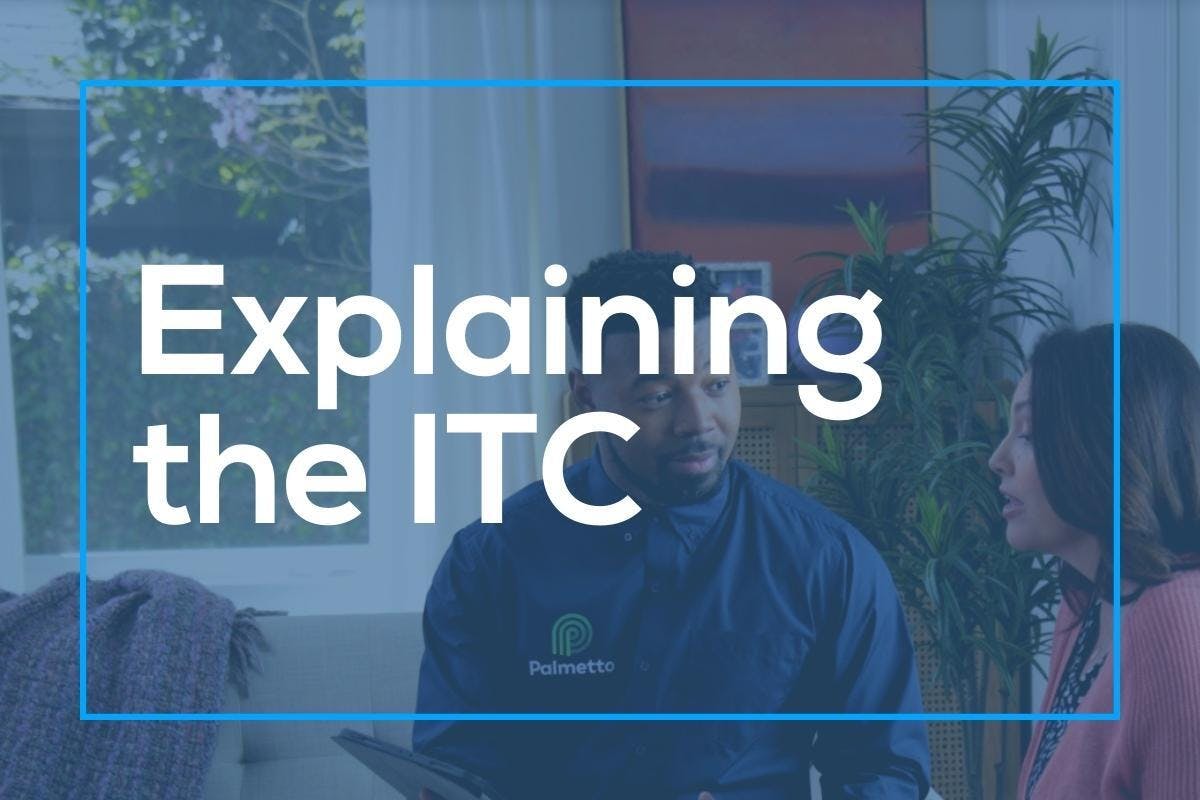One of the primary incentives often presented to people interested in solar panels is the Federal Investment Tax Credit, also known as the Solar ITC or solar tax credit. It’s a national program that helps people pay for their solar panels by giving them a credit back on their tax returns.
It’s important that you explain the ins, outs, and terms of the solar tax credit to potential customers. They need to understand how it works, how it could lower the cost of their solar panel installation, how it should be applied to their taxes, and more.
How the Solar Tax Credit Works
Before you go any further, you need to be upfront with customers:
This information should not be considered formal tax advice. Palmetto is talking about the Solar ITC as a way to give people a high-level overview of this federal solar incentive. If the customer wants to know more about whether or not they would be eligible for the solar tax credit, they should first talk to their accountant or a related tax professional.
We like to explain the solar tax credit like this:
- It’s a credit that allows eligble homeowners to deduct 26% of the dollar amount spent on their solar investment from their federal taxes owed.
- This money can be used to reduce the amount of federal taxes owed by people who pay taxes at the end of the year.
- For eligble homeowners who pay federal taxes throughout the year, the solar ITC can be applied as a credit to total taxes paid, which sometimes is returned to homeowners in the form of a refund check.
- To be eligible, the homeowner must be paying federal taxes. If they don't pay enough federal taxes in one year to account for the solar ITC, it may be rolled over until the homeowner receives the total credit amount.
Think of it as a coupon from the federal government that helps people pay less in federal taxes by making the decision to install solar panels.
How the Solar ITC Helps People Save
As we said earlier, a customer must owe federal taxes to take advantage of the Solar ITC. In other words, it’s a dollar-for-dollar tax credit that reduces a homeowner’s federal tax liability.
- Cost of the system x 26% = Full amount of tax credit
- What you owe in federal taxes - the amount of tax credit = What you would NOW owe in taxes
Telling a homeowner that it can lower the cost of installing a solar energy system is different than actually showing them, so it’s good to offer a helpful example in simple terms.
- If you paid $10,000 for a solar system, your ITC would be $2,600.
- $10,000 x 26% = $2,600
- When you file your taxes, you discover that you paid $5,000 in taxes throughout the year.
- Your solar ITC reduces your tax liability by $2,600.
- $5,000 - $2,600 = $2,400.
Other Crucial Details about the Federal Solar Tax Credit
While talking to potential solar customers about how they could use the solar income tax credit to help with the costs of solar panels, you should also cover the following facts:
- The tax credit is currently 26%. It will be 22% in 2023. It will be 0% in 2024 - unless the federal government extends it again.
- The amount includes all solar equipment and labor costs incurred during installation, including re-roofs and electrical work.
- It can include any solar battery storage the customer installs, but that storage system often has to be part of the overall installation.
- The tax credit can be used for solar panels installed on the customer’s permanent home and vacation homes, but not rental homes.
- The customer has to own the solar panels. They can’t get them via a solar lease or solar PPA.
- If the tax credit amount is more than the customer owes in a single tax year, it can be spread across multiple tax returns for up to 10 years.
Key Takeaways
The Solar ITC is an important sales incentive to discuss with your customers. Many of them have probably heard about it before, but they’re unclear on how it applies to them. It can be a very helpful way to reduce the overall costs of installing a solar panel system, but not everyone can use it. Thus, it’s essential that you present the high-level facts about the solar tax credit in an easy-to-understand fashion. However, you must also tell them that they need to talk to a certified tax professional for more in-depth information about their specific circumstances.
If you're a Palmetto sales member, enroll in our “Intro to the Solar ITC” course. If you aren’t already a Palmetto sales member, learn how to become one today.
